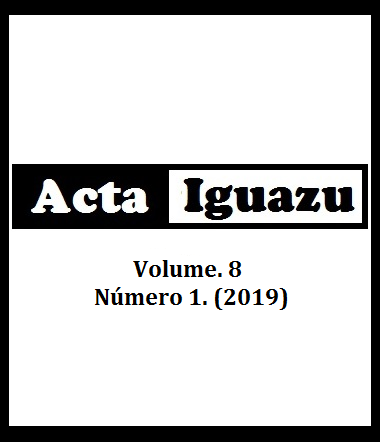Antagonist activity of Trichoderma harzianum against Sclerotinia sclerotiorum from common bean
DOI:
https://doi.org/10.48075/actaiguaz.v8i1.19067
Agências de fomento
CNPq, FAP-DF
Palavras-chave:
controle biológico, antibiose, mofo branco, Phaseolus vulgarisResumo
A key point in the development of new biopesticides is the discovery of strains with greater activity or more adapted to the environmental conditions under which such products are used. Thus, there is need to maintain a continuous flow of characterization and assessment of biocontrol agents. Therefore, five Brazilian Trichoderma harzianum isolates were evaluated in vitro against Sclerotinia sclerotiorum, the causal agent of the white mold of common bean. Initially, the isolates grown with the pathogen by paired culture and antibiosis assays. Light microscopy studies showed mycoparasitism by isolate CEN316 on S. sclerotiorum hyphae. Besides, reductions in the mycelial growth of S. sclerotiorum were verified with non-volatile metabolites of T. harzianum, wherein CEN287 and CEN316 inhibited the pathogen growth in 95% and 90% respectively. In vitro results, credit such isolates as potential holders in the development of soil inhabitant pathogens biological control program.Downloads
Arquivos adicionais
Publicado
04-03-2019
Como Citar
COSTA CARVALHO, D. D.; PEREIRA COSTA MUNIZ, P. H.; MARTINS, I.; ALVES SANTOS DE OLIVEIRA, T.; CORRÊA MARQUES MELLO, S. Antagonist activity of Trichoderma harzianum against Sclerotinia sclerotiorum from common bean. Acta Iguazu, [S. l.], v. 8, n. 1, p. 60–67, 2019. DOI: 10.48075/actaiguaz.v8i1.19067. Disponível em: https://saber.unioeste.br/index.php/actaiguazu/article/view/19067. Acesso em: 6 dez. 2025.
Edição
Seção
ARTIGOS CIENTÍFICOS
Licença
Aviso de Direito Autoral Creative Commons
Política para Periódicos de Acesso Livre
Autores que publicam nesta revista concordam com os seguintes termos:
1. Autores mantém os direitos autorais e concedem à revista o direito de primeira publicação, com o trabalho simultaneamente licenciado sob a Licença Creative Commons Attribution que permite o compartilhamento do trabalho com reconhecimento da autoria e publicação inicial nesta revista.2. Autores têm autorização para assumir contratos adicionais separadamente, para distribuição não-exclusiva da versão do trabalho publicada nesta revista (ex.: publicar em repositório institucional ou como capítulo de livro), com reconhecimento de autoria e publicação inicial nesta revista.
3. Autores têm permissão e são estimulados a publicar e distribuir seu trabalho online (ex.: em repositórios institucionais ou na sua página pessoal) a qualquer ponto antes ou durante o processo editorial, já que isso pode gerar alterações produtivas, bem como aumentar o impacto e a citação do trabalho publicado (Veja O Efeito do Acesso Livre).
Licença Creative Commons
Esta obra está licenciada com uma Licença Creative Commons Atribuição-NãoComercial-CompartilhaIgual 4.0 Internacional, o que permite compartilhar, copiar, distribuir, exibir, reproduzir, a totalidade ou partes desde que não tenha objetivo comercial e sejam citados os autores e a fonte.


